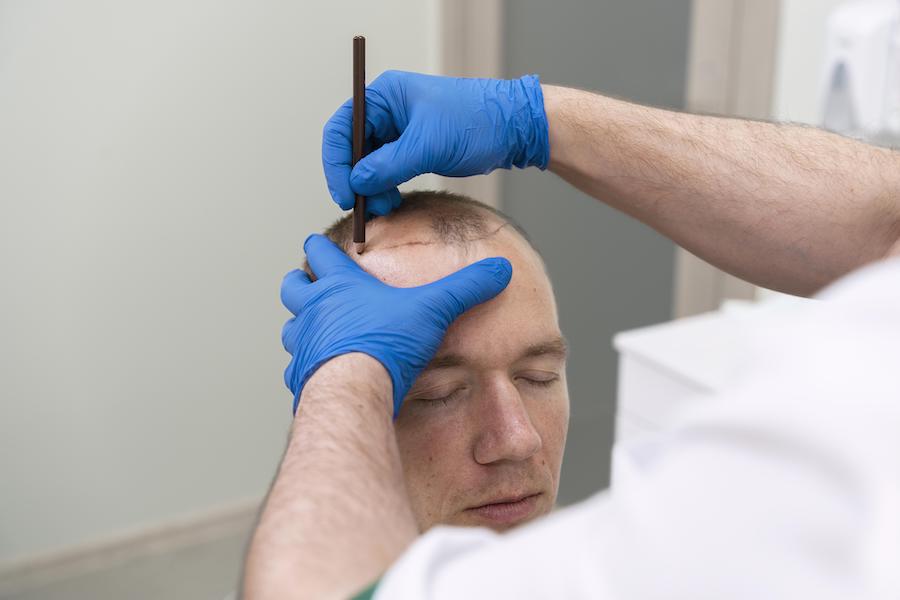Choosing the right hair transplant for women can feel like navigating a maze, especially with so many options available. If you’re experiencing hair loss and considering a hair transplant, understanding your choices is crucial for achieving the best results. It’s essential to consult with a qualified hair transplant surgeon to determine the most suitable procedure for your specific needs and goals.
Understanding Hair Loss in Women
Understanding the root causes of hair loss is crucial for effective treatment. While genetics, hormonal fluctuations, and underlying medical issues are common culprits, it’s important to remember that hair loss can also be triggered by stress, nutritional deficiencies, or improper hair care practices. By identifying the specific factors contributing to hair loss, individuals can tailor their treatment plans accordingly and increase their chances of successful hair restoration.
Types of Hair Transplant Procedures
There are several hair transplant methods, each with its benefits and drawbacks. Here’s a closer look:
Follicular Unit Transplantation (FUT)
FUT involves removing a strip of scalp from the donor area and dissecting it into individual follicular units. This technique is beneficial for those needing larger areas of coverage. However, it can leave a linear scar and might involve a more extended recovery period.
Follicular Unit Extraction (FUE)
FUE extracts individual hair follicles from the donor area and implants them into the thinning or balding areas. This method offers a less invasive approach with minimal scarring, though it may be more time-consuming and costly.
Direct Hair Implantation (DHI)
DHI is a variation of FUE that uses a specialised tool to implant hair follicles directly into the scalp. It provides precise control over the angle and depth of each follicle, potentially leading to more natural-looking results. However, it is often more expensive and requires a high level of expertise.
Factors to Consider When Choosing a Procedure
When choosing a hair transplant procedure, consider the following factors:
Hair Type and Density
Different procedures work better with different hair types. For instance, FUE is often preferred for finer hair or smaller transplant areas, while FUT may be suitable for thicker hair and larger coverage areas. It’s essential to consult with a qualified hair transplant surgeon to determine the best procedure for your specific hair type and density. Factors such as hair texture, growth pattern, and overall scalp condition also influence the choice of procedure.
Scalp Condition
The condition of your scalp can influence which procedure is best. If you have a tight scalp or significant scarring, FUT might be less suitable than FUE or DHI.
Budget Considerations
Hair transplant procedures vary in cost. FUT tends to be more affordable, while DHI is usually the most expensive due to its advanced techniques and precision.
Recovery Time
Recovery times can differ significantly. FUE generally has a shorter recovery period compared to FUT, which might involve more downtime due to the surgical strip removal.
Consultations and Assessments
A thorough consultation with a qualified surgeon specialising in hair transplant in Melbourne is vital. During this consultation, ask about their experience, the procedure details, and what results you can realistically expect. This step helps ensure that you’re well-informed and comfortable with your decision.
Preparing for the Procedure
Proper preparation can lead to a smoother experience. Follow pre-procedure guidelines provided by your clinic and ensure you understand the post-procedure care to maximise your results. Open communication with your healthcare provider is essential for addressing any concerns or questions you may have. By being well-informed and prepared, you can help to optimise the outcome of your procedure.
What to Expect During Recovery
After the procedure, expect some swelling and discomfort, which can usually be managed with prescribed medications. The recovery timeline varies but generally involves a few weeks before seeing noticeable results. It’s essential to follow your surgeon’s aftercare instructions closely.
Results and Follow-Up
Results from hair transplants can take several months to become fully visible. Regular follow-up appointments are crucial to monitor progress and address any concerns that might arise. Patience is key during this period, as the final results may take up to a year to fully materialise. Additionally, adhering to post-operative care instructions provided by your surgeon is essential for optimal healing and hair growth.
Comparing Hair Transplant Clinics
When selecting a clinic, consider its reputation, the surgeon’s expertise, and patient reviews. Choosing a reputable clinic with experienced professionals can significantly impact your overall satisfaction with the procedure. Additionally, investigating the clinic’s facilities, including the level of hygiene and technology used, is crucial. Furthermore, comparing costs and understanding the included services, such as post-operative care, can help you make an informed decision.
Conclusion
Selecting the right hair transplant procedure involves understanding your options, considering your specific needs, and consulting with professionals. By taking these steps, you can make a well-informed choice that enhances both your appearance and confidence. Remember, realistic expectations are key to a successful outcome, and it’s essential to choose a qualified surgeon with a proven track record.







